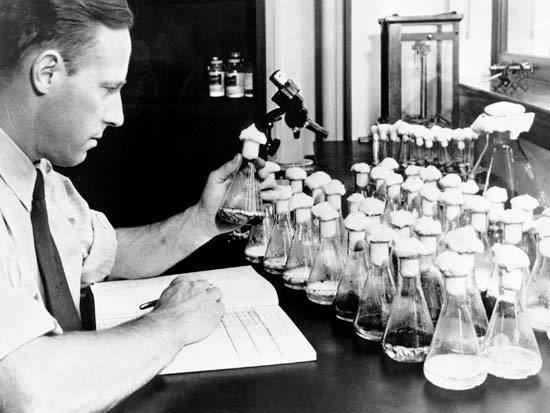Doctoral students Chi-Pui Pang | Name Edward Abraham Role Biochemist | |
 | ||
Born Edward Penley Abraham10 June 1913Shirley, Southampton ( 1913-06-10 ) Notable awards FRS (1958)CBERoyal Medal (1973) Died May 8, 1999, Oxford, United Kingdom Books Biosynthesis and Enzymic Hydrolysis of Penicillins and Cephalosporins | ||
Edward abraham mascot at tottenham hotspur vs fulham 13 5 12
Sir Edward Penley Abraham, (10 June 1913 – 8 May 1999) was an English biochemist instrumental in the development of the first antibiotics penicillin and cephalosporin.
Contents
- Edward abraham mascot at tottenham hotspur vs fulham 13 5 12
- Miami today profile edward abraham
- Early life and education
- Research
- Personal life
- Legacy
- Awards
- References
Miami today profile edward abraham
Early life and education
From 1924 Abraham attended King Edward VI School, Southampton, before achieving a First in Chemistry at The Queen's College, Oxford.
Abraham completed his DPhil at the University of Oxford under the supervision of Sir Robert Robinson, during which he was the first to crystallise lysozyme, an enzyme discovered by Sir Alexander Fleming and shown to have antibacterial properties, and was later the first enzyme who's structure was solved using X-ray crystallography by Lord David Philips.
Research
He then won a Rockefeller Foundation scholarship and spent a year in Stockholm at the Biokemiska Institut.
He then moved back to Oxford and became part of a research team led by Sir Howard Florey at the Sir William Dunn School of Pathology, responsible for the development of penicillin and its medical applications. Sir Edward was specifically involved in the purification process and determination of its chemical structure. In 1940 Edward discovered penicillinase as the cause of bacterial resistance to antibiotics such as penicillin. In October 1943 Abraham and Sir Ernst Boris Chain proposed a novel beta-lactam structure with a fused two ring system. This proposal was confirmed in 1945 by Dorothy Hodgkin using X-ray crystallography. Florey formally recognised Abraham's work in 1948 by nominating him to be one of the first three "penicillin" research Fellows at Lincoln College, Oxford.
Later that year samples of a Cephalosporium acremonium fungus with antibacterial properties were received from Giuseppe Brotzu. Abraham and Guy Newton purified the antibiotics from this fungus and found one, cephalosporin C, was not degraded by penicilinase and hence able to cure infections from penicillin-resistant bacteria. During a skiing holiday in 1958 Abraham conceived the structure of cephalosporin C, which he then went on to establish with Newton, and was confirmed by Dorothy Hodgkin through X-ray crystallography. Abraham showed that modification of the 7-amino-cephalosporanic acid nucleus was able to increase the potency of this antibiotic and registered a patent on the compound. This resulted in the first commercially sold cephalosporin antibiotic Cefalotin sold by Eli Lilly and Company. There are now five generations of cephalosporins, of which some are among the few remaining antibiotics for the treatment of MRSA.
In 1964 he became Professor of Chemical Pathology, and remained a Fellow of Lincoln until his retirement in 1980.
Personal life
Abraham was born at 47 South View Road, Shirley, Southampton. His parents were Maria Agnes Abraham, née Hearne and Albert Penley Abraham, a customs and excise officer.
In 1938 he met Asbjörg Harung whom he married and with whom he had a son Michael Erling Penley Abraham, born in Oxford in July 1943.
He died in May 1999, in Oxford, following a stroke. He was survived by his wife, Asbjörg.
Sir Edward and Lady Abraham lived at Badgers Wood, Bedwells Heath, Boars Hill, where part of the land, Abraham Wood is now managed by the Oxford Preservation Trust.
Legacy
He was a noted biochemist, his work on antibiotics producing great clinical advances. His principal work was concerned with the development of penicillin, and also later cephalosporin, an antibiotic capable of destroying penicillin-resistant bacteria. These vital drugs are now used extensively in the treatment of various infections, including pneumonia, bronchitis, septicaemia and infected surgical wounds.
Through the registration of the patent on cephalosporin, he was able to generate a regular income, which he devoted almost entirely to the establishment of two charitable trusts for the support of biomedical research, the Edward Penley Abraham Research Fund, the E.P.A. Cephalosporin Fund and The Guy Newton Research Fund. As of 2016 the combined endowment of these charities is over £194 million. By the end of the twentieth century, the charitable funds had donated more than £30m to the University of Oxford, mainly to the Dunn School of Pathology and to Lincoln College, along with other grants to The Royal Society and King Edward VI School, Southampton. Four recent Oxford buildings received funds from Abrahams trusts:
Awards
Abraham was the recipient of many awards over his lifetime:
